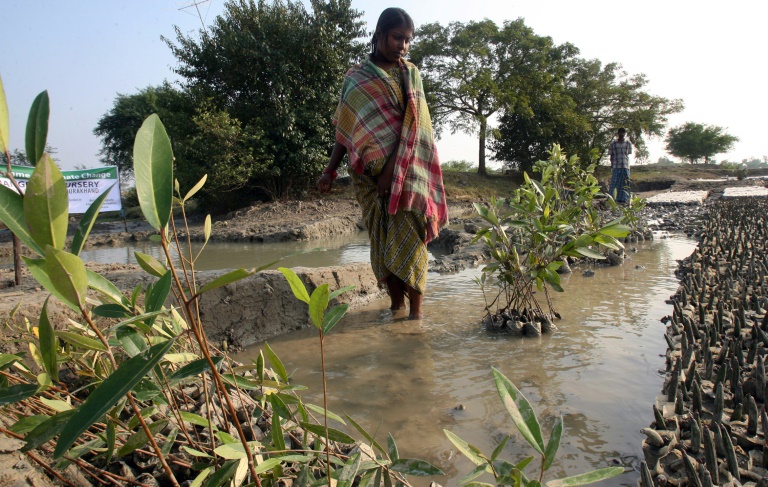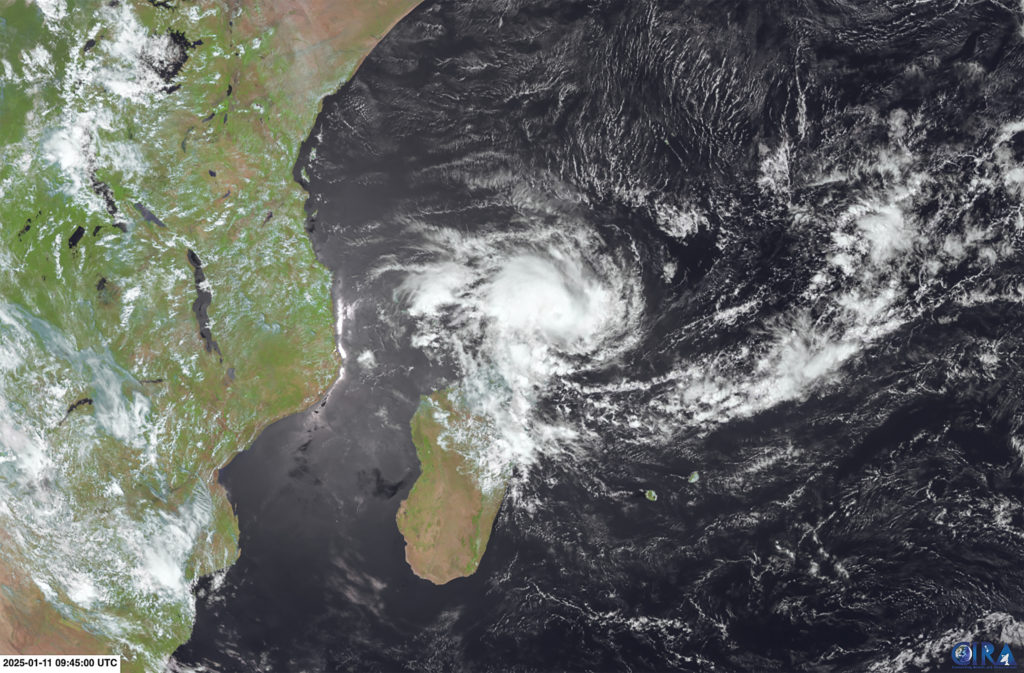With India facing ever more powerful cyclones, women in the world’s largest mangrove forest are planting thousands of saplings to help protect their coastal communities from climate change.
The Sundarbans straddle the coastline into neighbouring Bangladesh and are home to some of the world’s rarest creatures, including the Bengal tiger and the Irrawaddy dolphin.
The forest has been designated a World Heritage site but has in the past suffered from illegal logging and is regularly battered by intense monsoon storms.
Walking ankle-deep along a muddy shore, and balancing young plants on their heads, a group of local women last week began the long process of reforesting a bare stretch of coastline.
“This is an area prone to storms and cyclones,” said Shivani Adhikari, one of the women involved in the initiative. “So to protect the embankments, all of us women are planting.”
Mangroves protect coastlines from erosion and extreme weather events, improve water quality by filtering pollutants, and serve as nurseries for many marine creatures, according to the UN Environment Programme.
They can help fight climate change by sequestering millions of tons of carbon each year in their leaves, trunks, roots and the soil.
And they also help buffer coastal communities from the cyclones that have coursed through the area.
“If these embankments are protected, our village will survive,” said Goutam Nashkar, who lives near the project site.
“If our village survives, we will survive,” he added. “This is our hope, our wish.”
The project, backed by a local non-profit and the West Bengal government, aims to plant around 10,000 mangrove saplings.
India’s eastern states and the coast of Bangladesh are regularly battered by cyclones that have claimed the lives of hundreds of thousands of people in recent decades.
While the frequency and intensity in storms have increased — with climate change to blame — deaths have fallen thanks to faster evacuations, better forecasting and more shelters.











